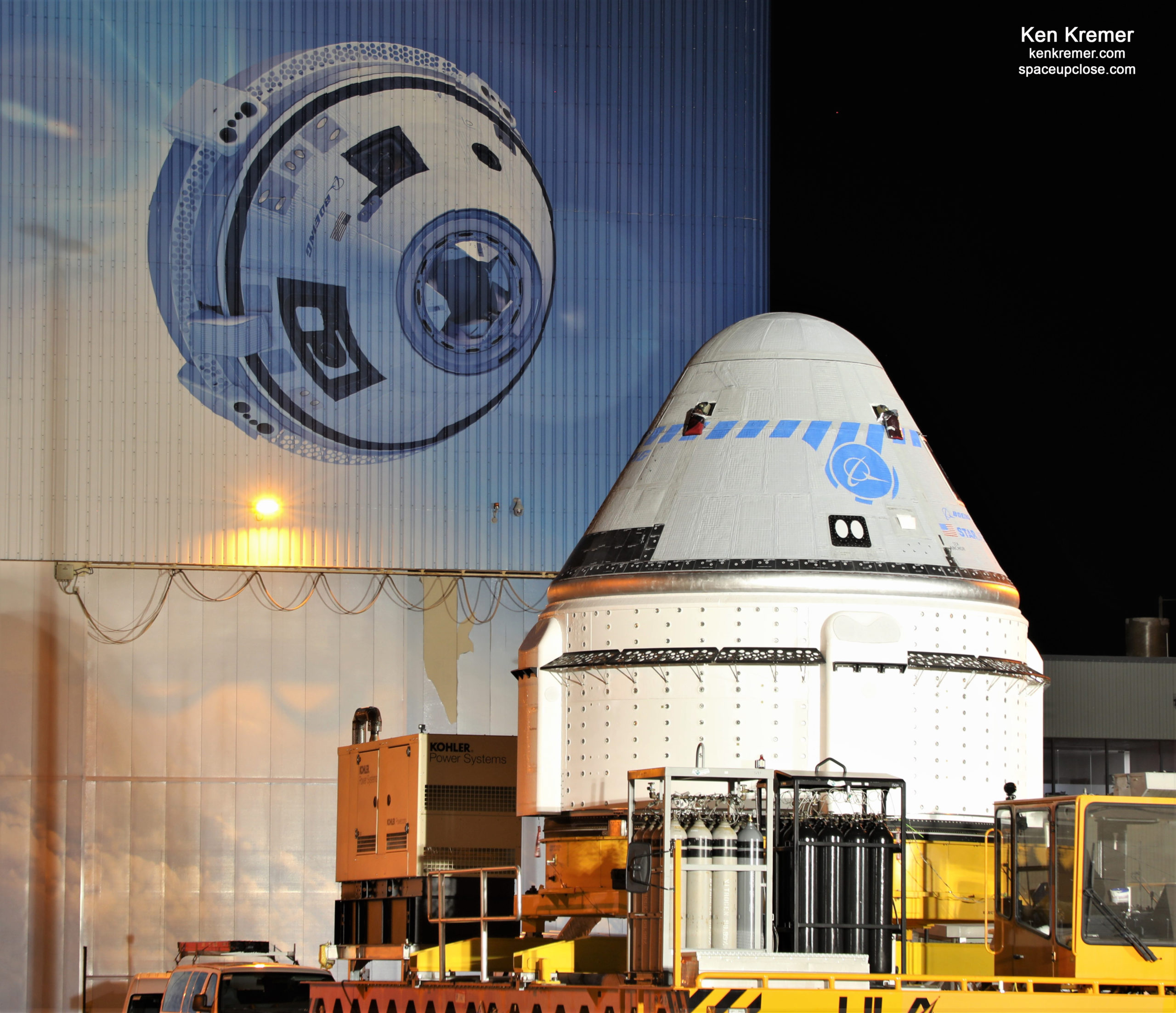
For SpaceUpClose.com & RocketSTEM
KENNEDY SPACE CENTER, FL – After more than a year of hardware and software fixes and upgrades Boeing’s CST-100 Starliner crew spacecraft rolled out in the dead of night Saturday, July 17, from the company’s Commercial Crew and Cargo Processing Facility (C3PF) manufacturing building at NASA’s Kennedy Space Center on a trek to the launch pad on the Cape – destined for Boeing’s second unpiloted test flight on what amounts to a critical ‘redo’ mission for NASA to prove the commercial system can safely carry NASA astronauts to and from the International Space Station (ISS) after it failed to dock on the inaugural problem plagued orbital test flight mission in Dec. 2019.
Everything is on the line for Boeing with this mission – and truly one can say ‘Failure is not an Option.’
Starliner emerged from the C3PF, a former space shuttle processing hangar, in the middle-of-the-night at about 3:30 a.m. EDT Saturday and traveled atop a transport vehicle for a 10-mile (16-kilometer) trek to United Launch Alliance’s (ULA) Vertical Integration Facility (VIF) at Cape Canaveral Space Force Station for mating with the Atlas V carrier rocket.
ULA’s motorized payload transporter, adapted to carry Starliner, moved at a top speed of 5 mph, first moving eastward and then southward to Space Launch Complex-41. During the transport, Starliner was provided environmental controls also on the transporter deck
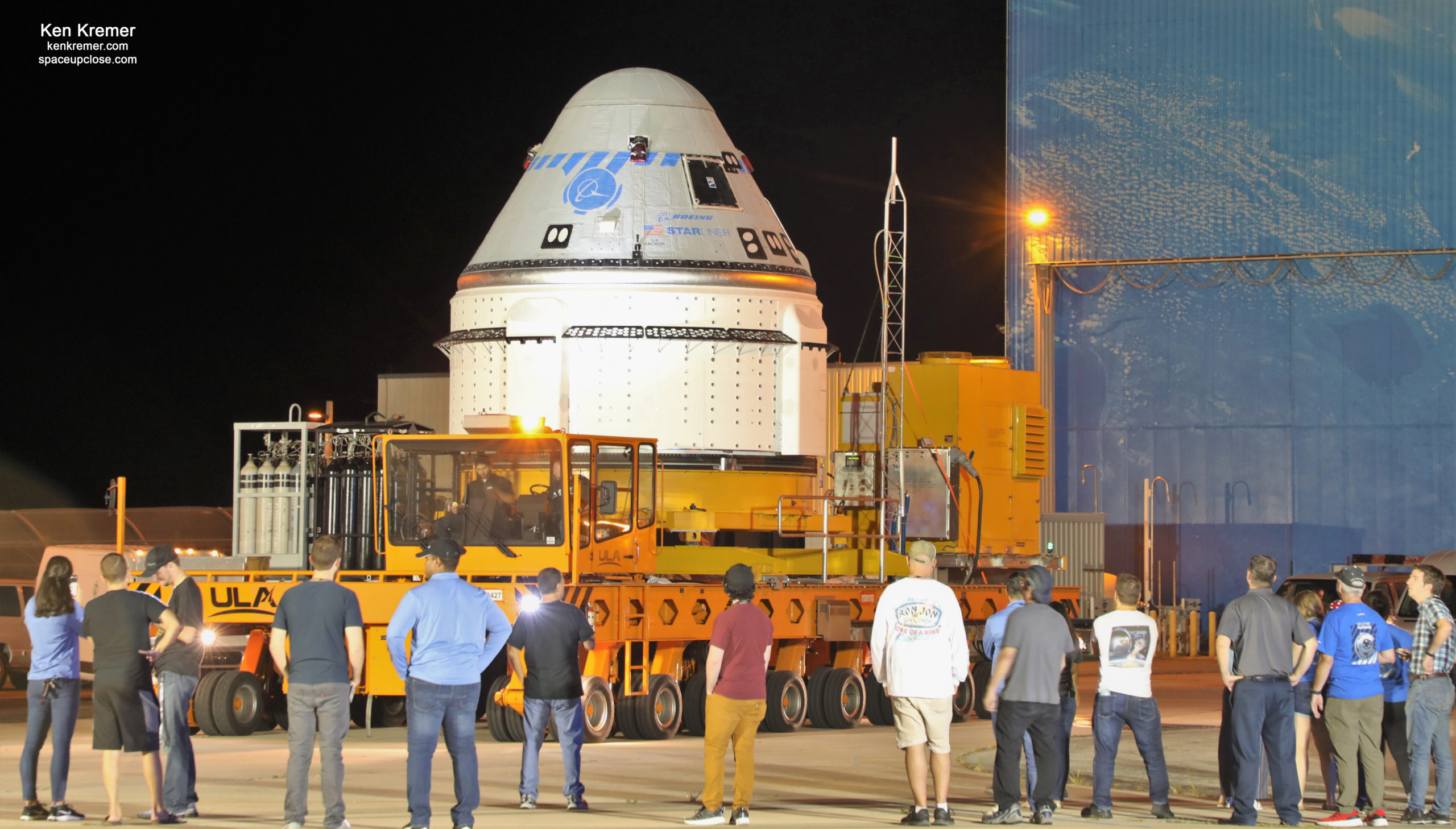
After completing the hour-long trip technicians hoisted the Starliner capsule for stacking and integration atop the already assembled and waiting ULA Atlas V carrier rocket inside the VIF later on Saturday.
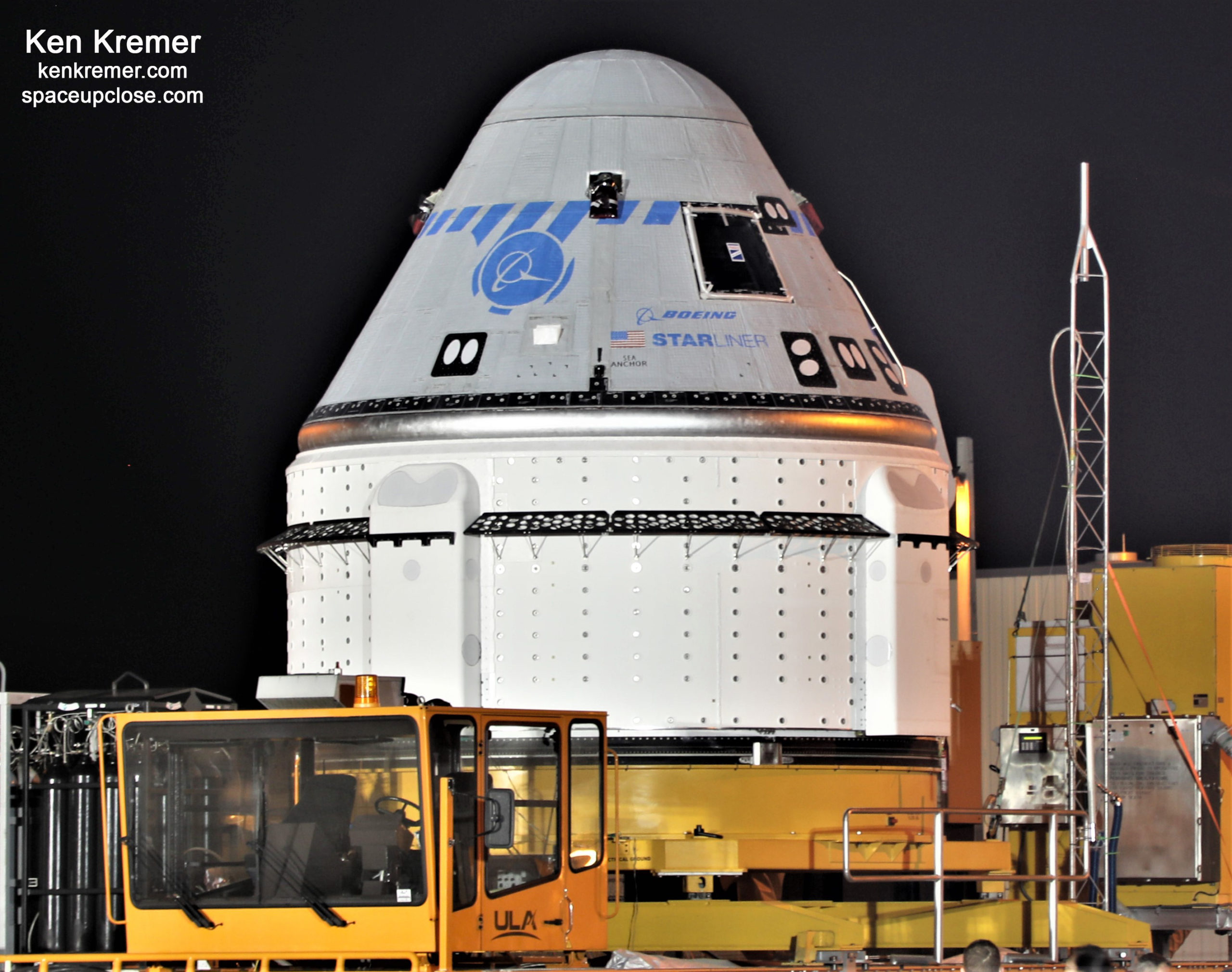
“A four-point lifting sling, called the Handling Fixture Hoist Tool, was connected to the Starliner for the overhead crane to carefully raise the capsule onto the Atlas V waiting inside the VIF aboard its mobile launch platform,” NASA wrote in a blog post.
“Starliner was positioned for mating to the launch vehicle adapter that serves as the spacecraft’s cradle on the rocket during ascent. The adapter also features the aeroskirt structure that smooths the air over the combined payload and Atlas V for aerodynamic stability.”
“Accommodations for Starliner in the VIF include a clean enclosure to enter the capsule’s crew module through the hatchway, access stands for technicians to detach the lift sling and complete preflight work to the spacecraft’s exterior, as well as power and data transmission umbilicals and purge and cooling lines.”
Next up is the integrated systems test, a tip-to-tail electrical check of the 172-foot-tall Atlas V and Starliner stack.
“Boeing’s CST-100 Starliner spacecraft is now poised to launch on a mission to demonstrate the system is ready to begin transporting NASA astronauts to and from the International Space Station (ISS),” Boeing said in a statement.
“Teams have fully integrated #Starliner to the @ulalaunch #AtlasV that will carry it to orbit. The spacecraft rolled out early this morning to the ULA Vertical Integration Facility to be stacked on the rocket,” Boeing tweeted.
Teams have fully integrated #Starliner to the @ulalaunch #AtlasV that will carry it to orbit. The spacecraft rolled out early this morning to the ULA Vertical Integration Facility to be stacked on the rocket.
More: https://t.co/2QDB9MJLai pic.twitter.com/i738iZsJGI
— Boeing Space (@BoeingSpace) July 17, 2021
Liftoff of Boeing’s commercial Starliner spacecraft on the Orbital Flight Test-2 (OFT-2) remains on track for the end of July from Florida’s Spaceport.
Launch of the Boeing Starliner OFT-2 mission is slated for 2:53 p.m. EDT (1853 GMT) on Friday, July 30 on a ULA Atlas V from Space Launch Complex-41 on Cape Canaveral Space Force Station, Florida.
The OFT-2 launch follows up on the botched first orbital test flight (OFT) of the commercial astronaut space taxi in Dec. 2019 that failed to reach the station and experienced numerous problems shortly after separation from the ULA Atlas V which performed flawlessly.
Watch this Starliner rollout video from Boeing:
“The Orbital Flight Test-2 #Starliner rolled out of our factory July 17 at NASA Kennedy and over to the @ulalaunch Vertical Integration Facility. Teams stacked Starliner on the #AtlasV rocket that will launch it to orbit on its journey to @Space_Station. Tune in to launch July 30,” Boeing tweeted with video.
The Orbital Flight Test-2 #Starliner rolled out of our factory July 17 at NASA Kennedy and over to the @ulalaunch Vertical Integration Facility. Teams stacked Starliner on the #AtlasV rocket that will launch it to orbit on its journey to @Space_Station. Tune in to launch July 30. pic.twitter.com/LC1CeUSxFm
— The Boeing Company (@Boeing) July 19, 2021
“Seeing the Starliner atop the Atlas V just days away from launch is symbolic of how proud our team feels about executing this mission,” said John Vollmer, vice president and program manager, Boeing Commercial Crew Program, in a statement.
“OFT-2 is a critical milestone on our path to crewed flights, and we’re all ready to see our hard work come to life with a successful mission from beginning to end.”
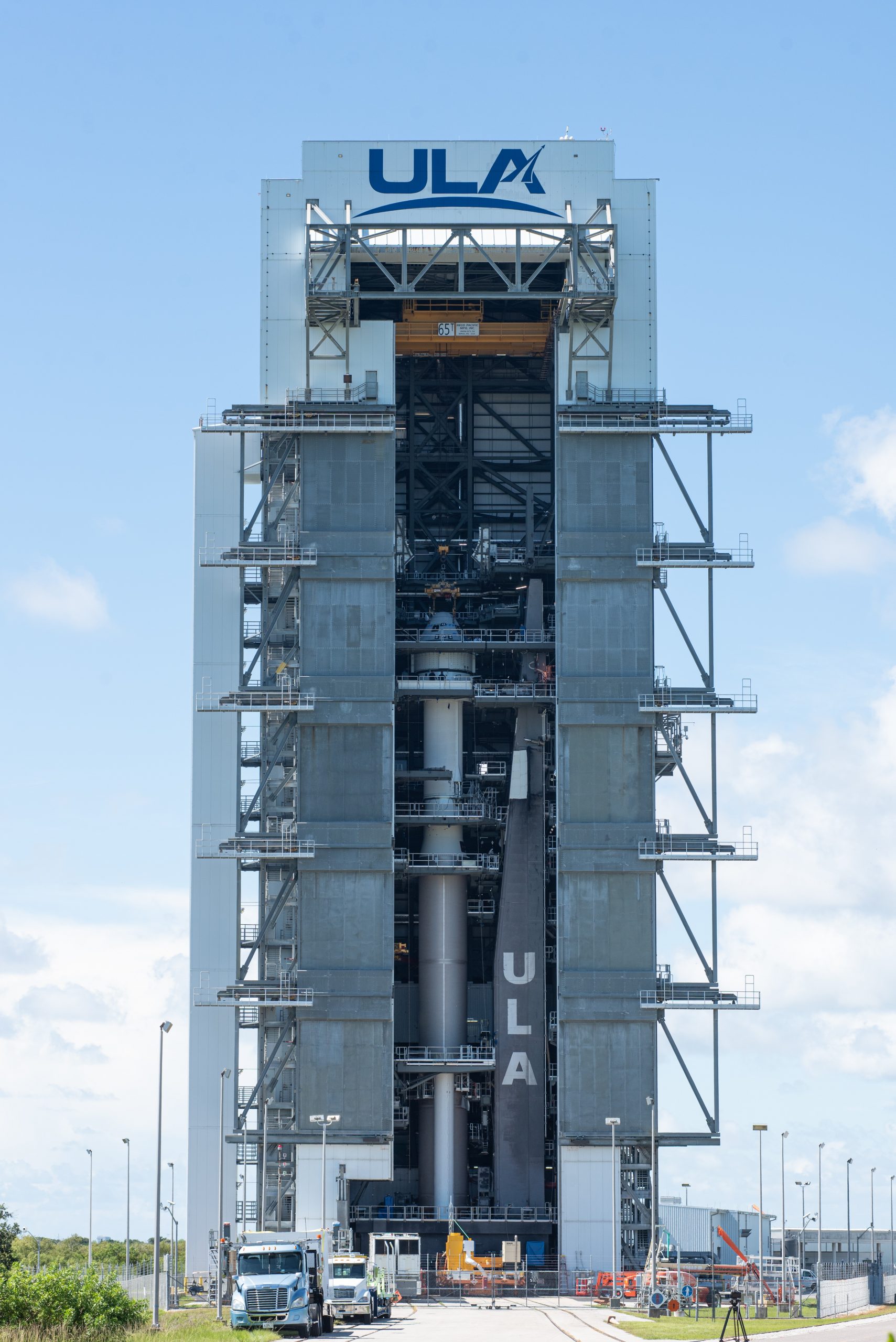
The goal of a second uncrewed test flight OFT-2 is to verify the Starliner CST-100 commercial space taxi is safe and reliable enough to be entrusted to launch NASA astronauts in the future to the International Space Station (ISS) – perhaps by years end.
The original OFT test flight failed to dock at the ISS as planned following launch on 20 December 2019 when a mission elapsed timing error caused the maneuvering thruster to fire longer than planned and expend excess precious fuel and place the ship in the wrong orbit minutes after liftoff on the ULA Atlas V – which performed flawlessly.
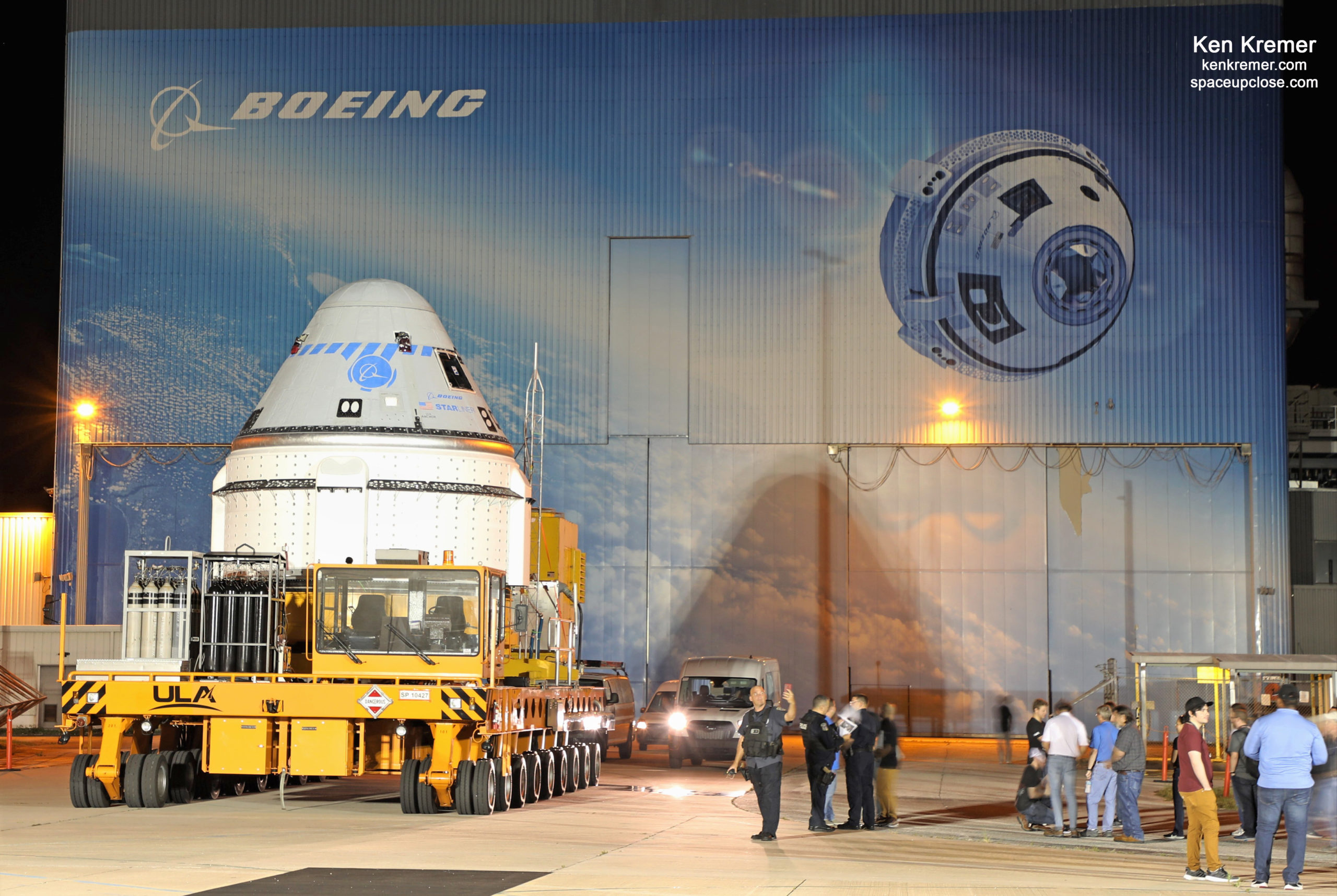
Starliner suffered quite a few other technical failures – especially on the return to Earth where the separation from the service module almost ended in a catastrophic collision but did finally end with a safe parachute assisted landing at White Sands Space Harbor, New Mexico.
Boeing did not run a full end-to-end mission rehearsal prior to the original OFT mission which would have revealed several of the problems that ultimately doomed the test flight.
Boeing will fly this second uncrewed Starliner mission OFT-2 at their own expense of some $420 million on an Atlas V targeting liftoff July 30 to prove to NASA the vehicle is safe and reliable.
Following Starliner’s unsuccessful OFT mission a joint NASA-Boeing Independent Review Team (IRT) was formed to conduct a complete review, determine the causes of the failures and make recommendation to solve all the issues.
The IRT issued a report with some 80 recommendations and corrective action that were all implemented, said NASA.
OFT-2 is the last flight before the Starliner system launches American astronauts on the Crew Flight Test to the microgravity laboratory – the first flight test with crew on board.
If all goes well with OFT-2 a trio of NASA astronauts will fly on the first crewed Starliner mission dubbed CFT (Crew Flight Test) perhaps as soon as years end.
My interview about the Starliner rollout and the importance of the mission were featured on WESH 2 NBC News Orlando on July 18 & 19:
https://www.wesh.com/article/boeing-starliner-now-in-brevard-prepares-for-test-flight-redo/37067233
Edit:
My interview about the Starliner rollout and the importance of the mission were featured on WFTV ABC 9 News Orlando on July 22 & 23:
Watch Ken’s continuing reports about Starliner and Commercial Crew and Crew Dragon, Artemis and NASA missions, SLS, Orion, SpaceX, Starlink from onsite for live reporting of upcoming and recent SpaceX and ULA launches including Crew 1 & 2, Demo-2, ISS, X-37B, Solar Orbiter, Mars 2020 Perseverance and Curiosity rovers, NRO spysats and more national security missions and more at the Kennedy Space Center and Cape Canaveral Space Force Station.
Stay tuned here for Ken’s continuing Earth and Planetary science and human spaceflight news: www.kenkremer.com –www.spaceupclose.com – twitter @ken_kremer – email: ken at kenkremer.com
Dr. Kremer is a research scientist and journalist based in the KSC area, active in outreach and interviewed regularly on TV and radio about space topics.
………….
Ken’s photos are for sale and he is available for lectures and outreach events
Please consider supporting Ken’s work by purchasing his photos and/or donating at Patreon:
https://www.patreon.com/kenkremer
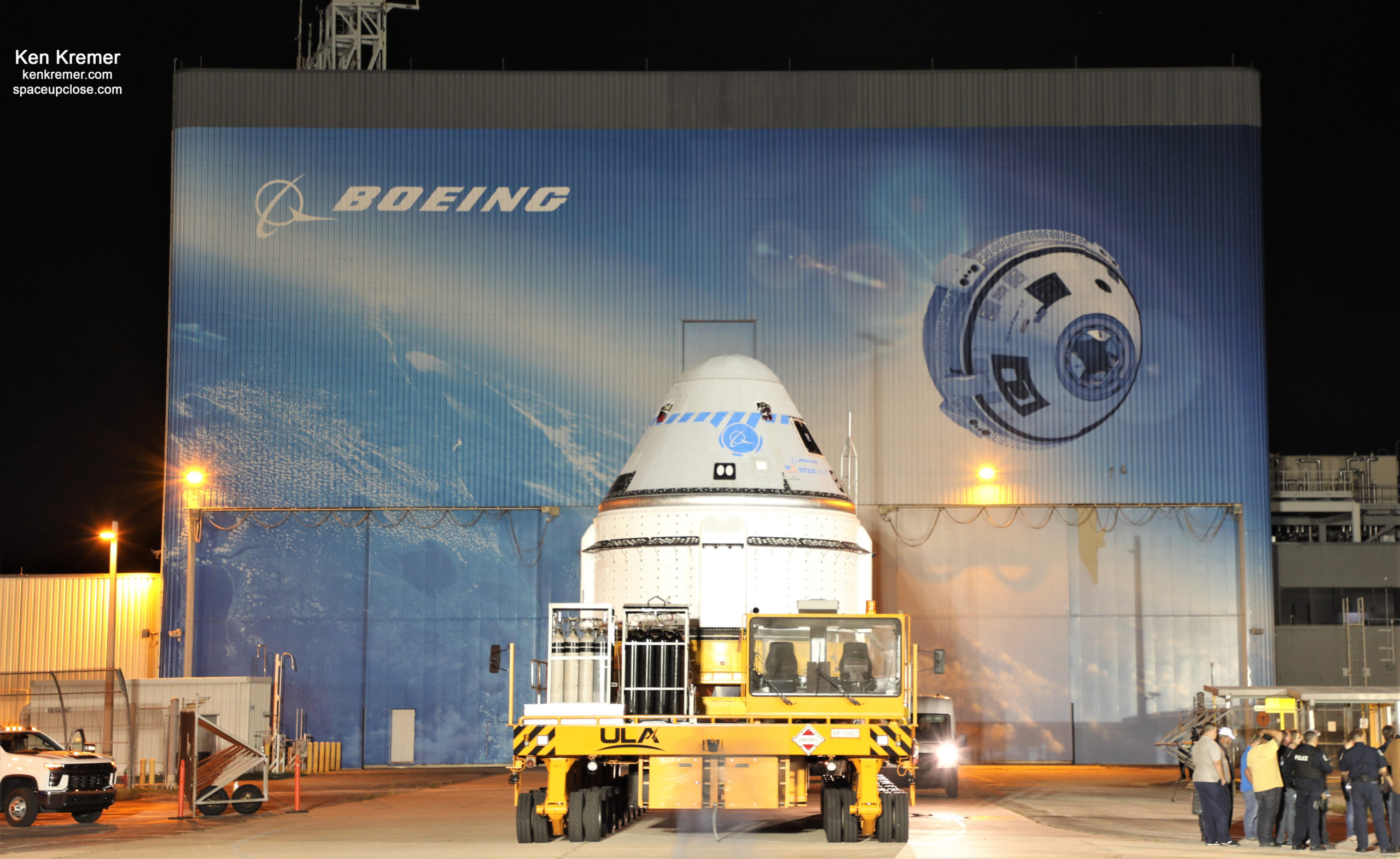
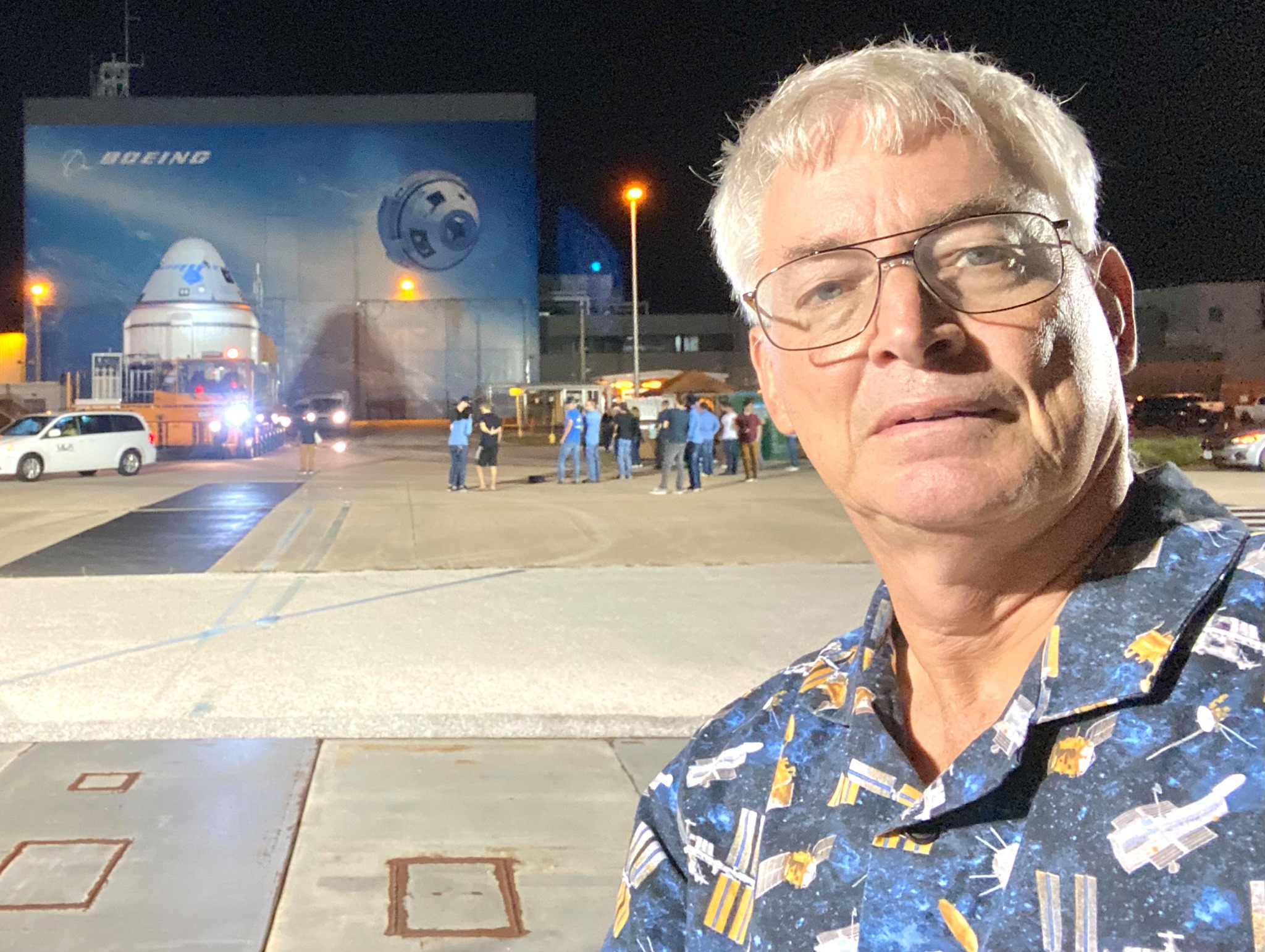
x



